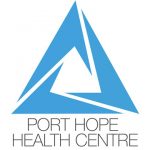Little league elbow a common problem for young pitchers
Little league elbow is an overuse injury linked with throwing sports such as baseball.
The problem can occur in any baseball player, but is most common in young pitchers.
The cause of the injury is a result of repetitive stress to the inside of the elbow, at the growth plate of the bone, while throwing. During the throwing cycle, there is a great amount of stress generated during the acceleration phase, which translates to the structures on the inside of the elbow.
Little leaguers will usually begin to feel an occasional, painful, distinct pop or click on the inside of the elbow that starts without a specific injury.
Over time, swelling, aching and sharp pains can be felt. At first, symptoms will only be felt with pitching. However, as symptoms progress, any throwing motion may cause pain.
The most common age group to experience this problem is between eight and 15 years. The primary cause of the problem is a high volume of throwing.
Studies have shown there is a direct link between pitch count and elbow pain felt by athletes. Minor leagues have rules about the number of pitches young people should throw in a game.
It is important that a coach or parent count the number of throws by the athlete. Pitches that seem to create the most amount of strain on the elbow are curveballs and sliders. These options are not recommended to pitchers until ages 14 and 16, respectively.
It is important for young athletes to consult with a manual health professional if they are feeling inner elbow symptoms with throwing. Basic treatment includes a period of complete rest from throwing. Length of time depends on the severity of the problem.
Dr. Andrew Fagan is a licensed chiropractor, kinesiologist and clinical acupuncture provider. You can reach him at dr.fagan@porthopehealthcentre.com or 905-885-5111




